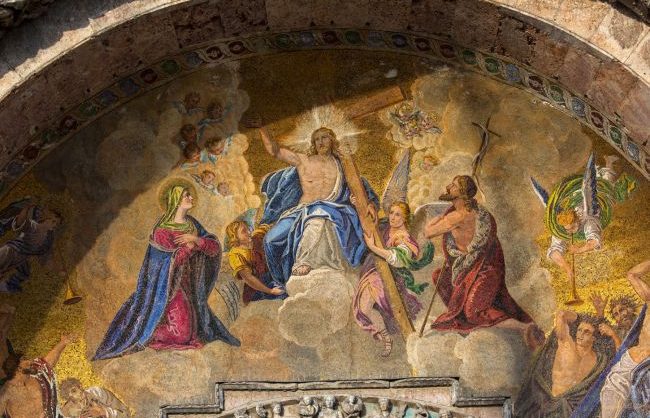Archaeologists may have discovered the village where Jesus is said to have appeared after he was crucified.
In accordance with Luke’s Gospel. Following the crucifixion of Jesus, two of his disciples went to Emmaus, and a stranger walked by them on their way to the village, asked them what had just happened in Jerusalem.
The stranger disclosed that he was Jesus in this biblical story only when they reached Emmaus and stopped for supper.
Two archeologists suggest that an archeological site known as the Kiriath-jearim might be the Emmaus in a document released in the sequence “New Studies of Archeology of Jerusalem and its Region.”
The location of Emmaus has long been a topic of debate, with a few different sites proposed in the past.
While biblical scholars generally agree that Jesus was a real person, they’ve long debated which stories in the Bible actually occurred and which ones did not. The story of Jesus reappearing at Emmaus may have never happened.

Complicated proposal
Several clues point to Kiriath-jearim being Emmaus. For instance, the Gospel of Luke says Emmaus is “60 stadia” from Jerusalem, a distance about equal to the 8 miles (13 kilometers) that separates Kiriath-jearim from the Old City of Jerusalem, wrote Israel Finkelstein, professor emeritus at the Institute of Archaeology at Tel Aviv University in Israel, and Thomas Römer, a professor of biblical studies at Collège de France, in the forthcoming article.
Recent excavations at Kiriath-jearim have also uncovered a series of fortifications that were renovated during the first half of the second century B.C., and according to the Book of Maccabees, the Seleucid Empire (an empire ruled by the descendants of one of Alexander the Great’s generals) controlled much of the region, fortifying several sites, including Emmaus.

The researchers can’t be completely certain that Kiriath-jearim is Emmaus and not another site fortified by the Seleucids.
But the fact that the site is located 60 stadia from Jerusalem supports the proposal. Additionally, the other sites mentioned in the Book of Maccabees that the Seleucids fortified don’t appear to match up well with Kiriath-jearim.
Adding more evidence for the proposal, pottery found at Kiriath-jearim suggests that the site was inhabited around the time that Jesus is said to have lived. This means there would have been an active village at the site for Jesus’ disciples to visit and where Jesus could have appeared.
Problems with identification
There are, however, problems with the idea that Kiriath-jearim is Emmaus, the researchers wrote. For instance, there doesn’t seem to be any linguistic connection between the names Kiriath-jearim and Emmaus, the researchers noted. Also, other sites do have at least tenuous links to Emmaus: A fourth-century historian named Eusebius wrote in his book “Onomasticon” that Nicopolis is Emmaus.
Other sites also have potential. For instance, Josephus, a historian who lived during the first century, wrote that retired Roman soldiers settled at Emmaus, which he claimed was only 30 stadia from Jerusalem, at a site located near Qaluniya (a village that was not abandoned until 1948).
Finkelstein and Römer are co-directors of excavations at Kiriath-jearim. After their paper is published, scholars not affiliated with the research project will be able to evaluate the proposal’s evidence.
